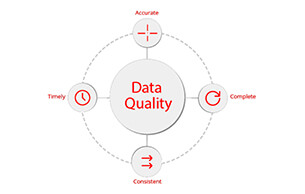8 Tips for Businesses To Improve Social Media Advertising Results
This article delves into essential strategies and tips for successfully navigating the dynamic world of social media advertising, a powerful tool that has emerged in the ever-evolving landscape of digital marketing to connect marketers with their target audience.
Crafting Compelling Content
Crafting compelling content stands as a fundamental aspect of any successful social media advertising campaign: marketers must concentrate their efforts on generating visually attractive, engaging material that strikes a chord with their audience. Whether one opts for eye-catching images; captivating videos—or concise copy—it remains imperative to ensure alignment between the brand’s identity and its values in all forms of online communication. Key to engaging consumers is authenticity: they are more inclined towards content that exudes a sense of genuineness and relatability.
Understanding Platform Dynamics
Marketers must tailor their approach to match the unique dynamics of each social media platform: Instagram’s visually-driven nature; Twitter’s concise messaging–and LinkedIn, with its professional network. It is crucial that they understand these platforms’ nuances: adapting content to align with a platform’s culture guarantees an audience-targeted message in a resonant format.
Targeting the Right Audience
Advanced targeting options in social media advertising empower marketers to reach specific demographics, interests, and behaviors; therefore, defining and targeting the appropriate audience is crucial for maximizing campaign impact. By employing data and analytics–understanding your audience’s preferences, behaviors, and demographics become possible: this enables precise targeting that augments engagement likelihood as well as conversion rates.
Strategic Use of Ad Formats
A variety of ad formats – sponsored posts, carousel ads, and stories – are offered by social media platforms. Strategically choosing these is a crucial task for a marketer or digital marketing agency, they must base their selection on two key factors – their campaign goals and the nature of their content. To illustrate this point further– let’s consider Instagram stories; a visually-oriented brand could potentially find success through utilizing them. Similarly: Facebook sponsored posts could serve as an advantageous tool for service-based businesses to leverage. Experimenting with different formats allows marketers to identify what resonates best with their audience.
Effective Use of Hashtags
The critical role of hashtags in broadening the social media content’s reach cannot be underestimated: marketers must undertake industry-specific research–identifying relevant hashtags–and strategically weave them into their posts. This approach augments not only the discoverability of such content, but also eases engagement from users who harbor an interest towards those particular topics. Nonetheless, one must exercise caution in the excessive use of hashtags; such a practice can dilute the message and render content seemingly spammy.
Monitoring and Analyzing Performance
Continuous monitoring and analysis of campaign performance are crucial for a successful social media advertising strategy. Track metrics such as reach, engagement, click-through rates and conversions using the analytics tools each platform offers. Regularly assess performance data to pinpoint effective strategies–and identify areas requiring potential adjustments. This data-driven approach allows marketers to optimize campaigns in real-time and allocate resources effectively.
Building Relationships through Engagement
Inherently social, social media surpasses the mere broadcasting of messages for successful advertising. Marketers must actively engage their audience by responding to comments and messages; they should also partake in conversations. By building relationships around the brand, a sense of community flourishes–this fosters increased loyalty and advocacy. Additionally, positive interactions with customers contribute to a positive brand image.
Adapting to Algorithm Changes
Frequent algorithm updates by social media platforms significantly impact content visibility. Marketers must remain vigilant, keeping themselves informed about these changes and preparing to adapt their strategies accordingly: this could entail tweaking content formats; adjusting posting schedules–or even exploring new features introduced through the platforms. To ensure the effectiveness of advertising efforts in a dynamic digital landscape, one must stay agile and promptly respond to algorithm changes.
In digital marketing, social media advertising is a powerful tool. To succeed, marketers should create engaging content, know platform specifics, and target the right audience. Using varied ad formats and hashtags, monitoring performance, building relationships, staying updated on algorithms, and adhering to ad policies are crucial. Following these guidelines allows marketers to unleash the full potential of social media ads and achieve significant results by connecting with their audiences.








